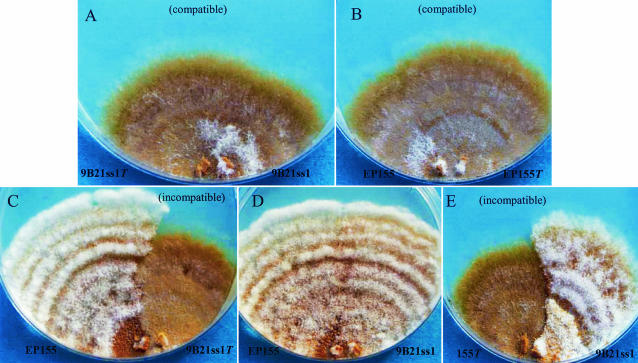FIG. 5.
Infectivity of 9B21 reovirus following introduction of particles into two vegetatively incompatible strains of C. parasitica. Virus particles were introduced into protoplasts of either strain 9B21ss1 or EP155 and plated on regeneration medium. After 10 days, subcultures were grown from various regions of the primary transfectant culture. Two such subcultures with phenotypes typical of 9B21, labeled 9B21ss1T and EP155T, were plated beside each of the original uninfected isolates and allowed to grow for 10 days, until the edge of the plate was reached. Virus was transmitted consistently from the transfected to the isogenic compatible isolates, with resulting phenotypic changes (A and B), but in no case did virus move from EP155T into 9B21ss1 or from 9B21ss1T into EP155 (C and E). (D) Virus-free isolates plated adjacent to each other.

